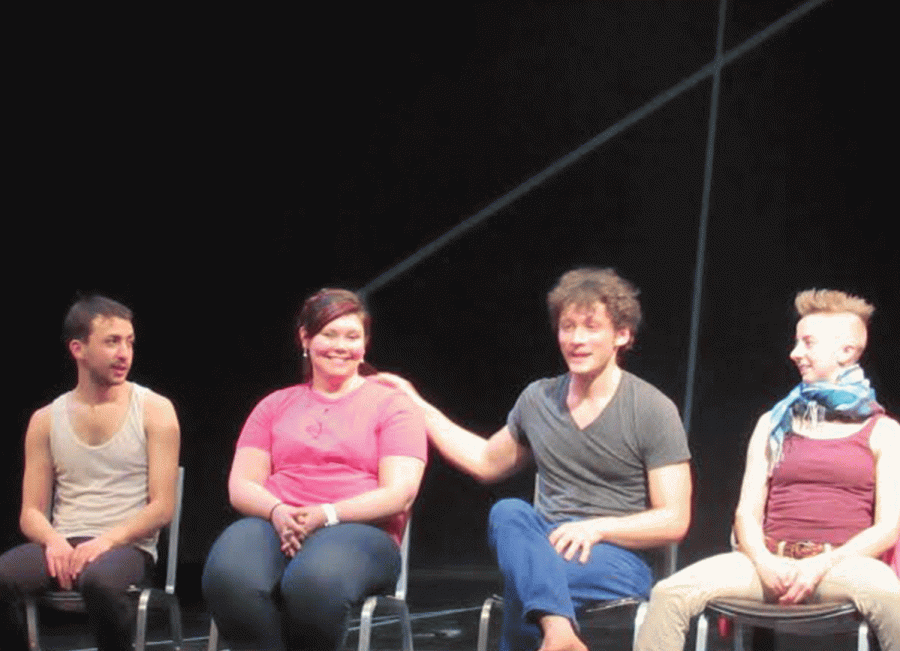Communitas: Physical Storytelling Confronts the Limitations of Humanity
Students and locals alike enjoyed the Communitas project, performed by the Almanac Dance Circus Theater Company on Friday, February 12 at 7 p.m. It was hosted at Brehmer Theater in Dana Arts Center.
The group was founded in 2013 by Nick Gillette, a 2006 Colgate alum, and Ben Grinberg. Lauren Harris ’11, a Colgate Theater concentrator, joined the company the following year. Adam Kerbel soon followed. Equally integral to the show are sound designer Rob Manuel and production manager, lighting designer, stage manager and producer Robin Stamey.
Communitas seeks to explore ideas of balance, support and trust. Four performers, accompanied by live music, danced onstage. Their movement was a type of physical storytelling that asked audience members and performers to confront their own humanity and the limitations of that humanity.
The show was as much about storytelling as it was about shock value. The dancers impressed audience members with their jaw-dropping “tricks.” One trick involved playing chicken with the edge of the stage; two of the performers stood on the other two members’ backs as they ran, blindfolded, from a back corner to the very front, practically hovering over the first row of seats. This sort of curated danger of circus art was intriguing for audience members.
“I got to see them do their trick call – it’s like a fight call, where you go through your more difficult things to make sure you know all the steps and you’re not getting lazy with it,” senior Allison Spanyer said.
Performers donned interesting personas throughout the production. At various times the four performers looked like children, monsters or puppets; sometimes they seemed to be twins or mirror images. Actors appeared to be fighting, dancing or sitting around a bonfire telling stories with their hands. Occasionally, it looked more like a game with rules the audience didn’t know. Perhaps one of the most impressive moments was when two dancers performed what looked like extreme yoga. One performer stood on one foot on the thighs of a second, hooking his other foot around the back of his partner’s neck and leaning out to counteract his partner’s weight with his own.
Manuel’s live guitar performance in the background responded to and interacted with nuances of the movement in the piece. It made aspects of the performance more accessible. The comforting plucking and occasional harmonica harmony kept the show light and even comedic.
The exact nature of the show was hard to pin down. In some ways, it was like a series of questions: what would it look like if we used our heads more, in the literal sense? What if our limbs were like limp noodles? What if life happened through dance, and everything depended on weight and muscles the way that our world depends on gravity? Could we communicate better in this world of dance? For instance, how can we change our perspective by riding someone’s shoulders?
When asked about the ambiguity of genre, Grinberg gave an interesting response.
“Dance people say ‘you don’t point your toes, it isn’t dance.’ The circus people say ‘it isn’t circus.’ The theater people are great! They think it’s theater!” Grinberg said.
The audience was slow to leave, hanging on to every last word.







